Buckle up, fellow gen X-ers and nostalgic movie buffs! The 1980s were an absolute goldmine of action cinema that defined a generation of larger-than-life heroes, explosive stunts, and unforgettable one-liners. We’re about to take a wild ride through the most iconic action movies that weren’t just films, but cultural touchstones that shaped how we viewed heroism, adventure, and what it means to be truly cool.
1. Top Gun: More Than Just Aviator Sunglasses
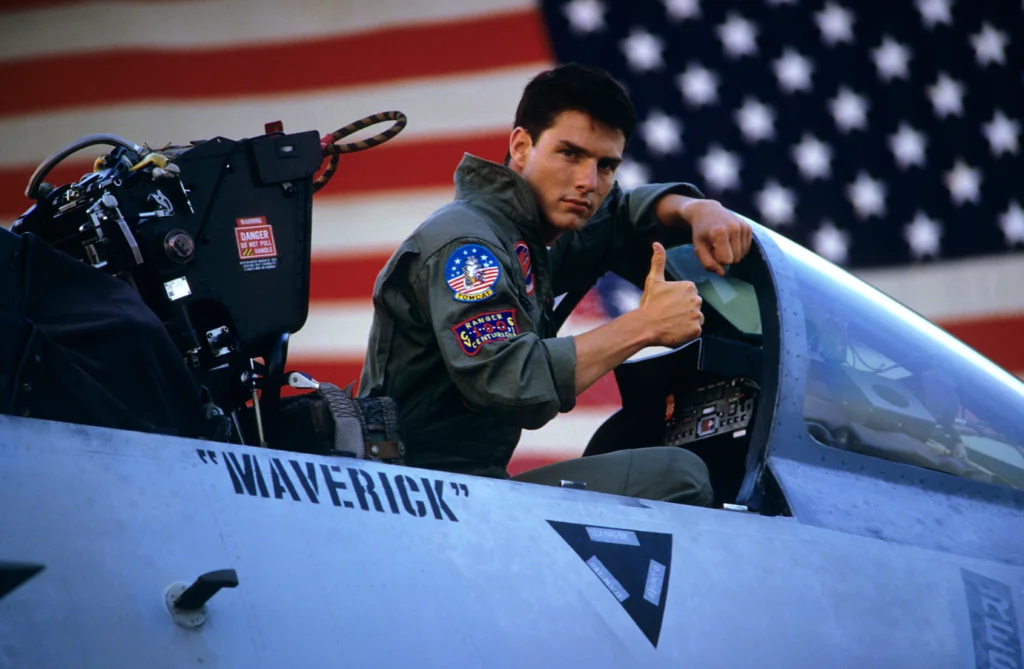
Tom Cruise wasn’t just playing a pilot; he was embodying an entire generation’s fantasy of aerial bravado. The movie’s groundbreaking aerial cinematography captured the imagination of millions, making fighter pilots seem like rockstars of the sky. Every young person watching wanted to be Maverick, complete with that killer smile and breathtaking confidence. War on the Rocks praises the film for still feeling ground-breaking at over 30 years of age.
The film’s soundtrack became an instant classic, with “Danger Zone” blasting from car radios and boomboxes across America. Kenny Loggins became the unofficial musical voice of adrenaline-fueled adventure. Beyond the high-octane flight sequences, the movie subtly explored themes of friendship, loss, and personal growth that resonated far beyond the aviation backdrop.
2. Predator: Jungle Warfare Meets Sci-Fi Thrills
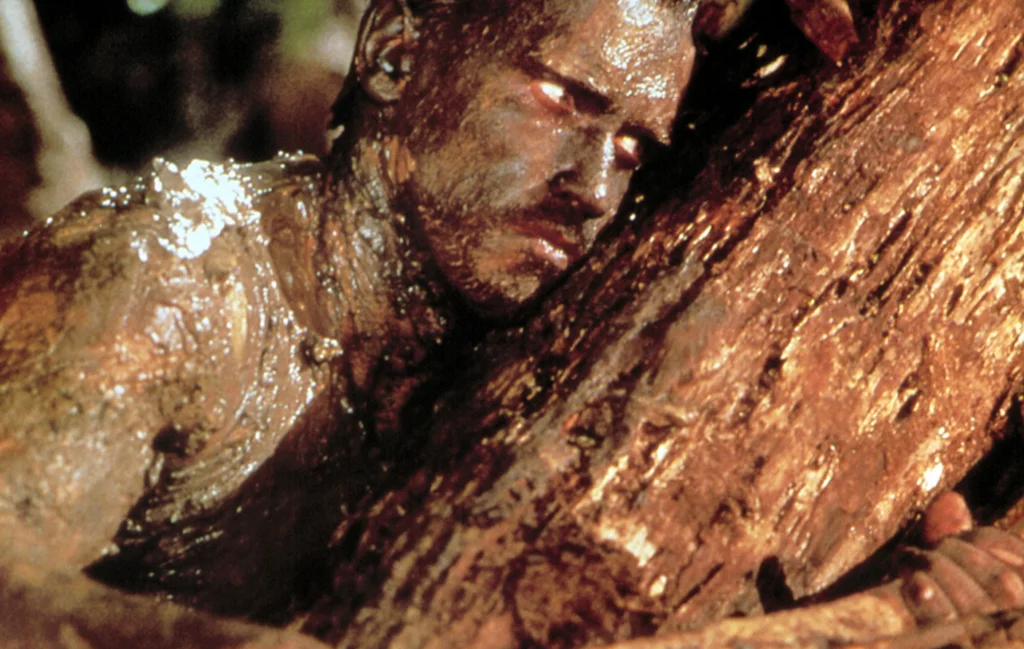
Arnold Schwarzenegger’s muscle-bound team of commandos represented the ultimate male fantasy of masculine strength and camaraderie. The film brilliantly blended military action with science fiction, creating a genre-defying experience that kept audiences on the edge of their seats. Each team member brought a unique personality that made their inevitable confrontations with the alien hunter feel deeply personal. Bittersweetly, Screen Rant reports that Arnold almost returned to the franchise no less than four times.
The practical effects in Predator were light-years ahead of their time, creating an alien creature that felt genuinely terrifying and believable. Director John McTiernan crafted a perfect blend of suspense and explosive action that would influence sci-fi and action films for decades to come. The film’s iconic thermal vision sequences became an instant visual landmark in cinema history.
3. Die Hard: The Everyman Hero Emerges
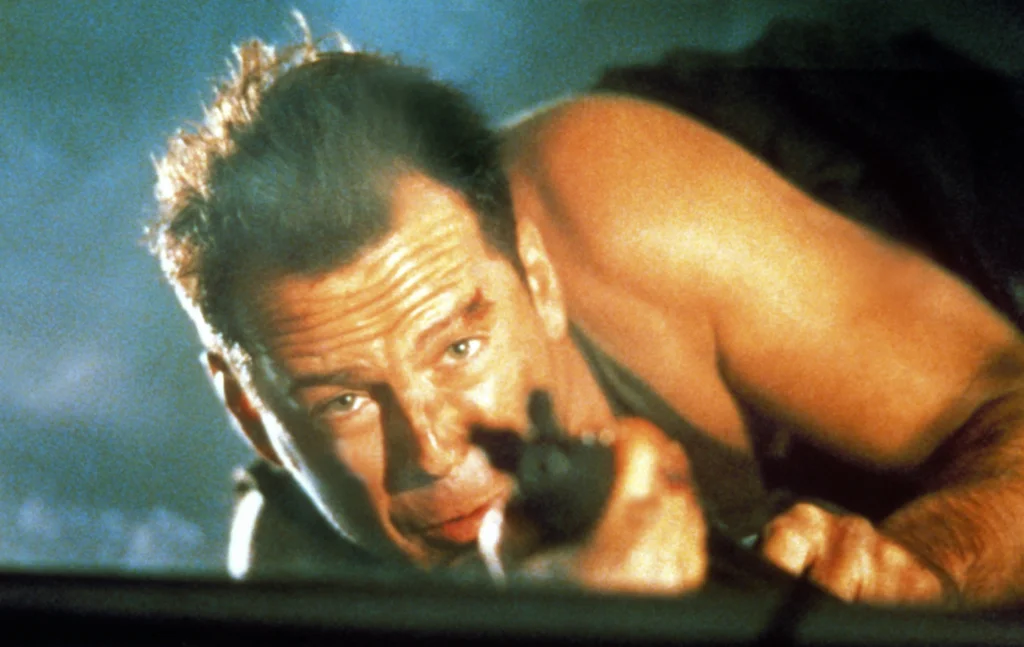
Bruce Willis transformed the action hero archetype from invincible muscle-bound warriors to a relatable, wise-cracking New York cop. John McClane wasn’t a superhuman – he was vulnerable, resourceful, and wore regular undershirts instead of skin-tight combat gear. His everyman approach made him feel like someone you might actually know, which made his heroic moments all the more electrifying. In addition, CBR writes that this was all the more remarkable for Bruce Willis because no one wanted to even think of him as an action icon.
The Nakatomi Plaza became more than just a setting; it was a claustrophobic battlefield that redefined urban action movie landscapes. Willis’s performance struck a perfect balance between humor and intensity, creating a character that would inspire countless action protagonists. His character proved that wit and determination could be just as powerful as massive biceps.
4. Robocop: Dystopian Action with a Sharp Social Commentary
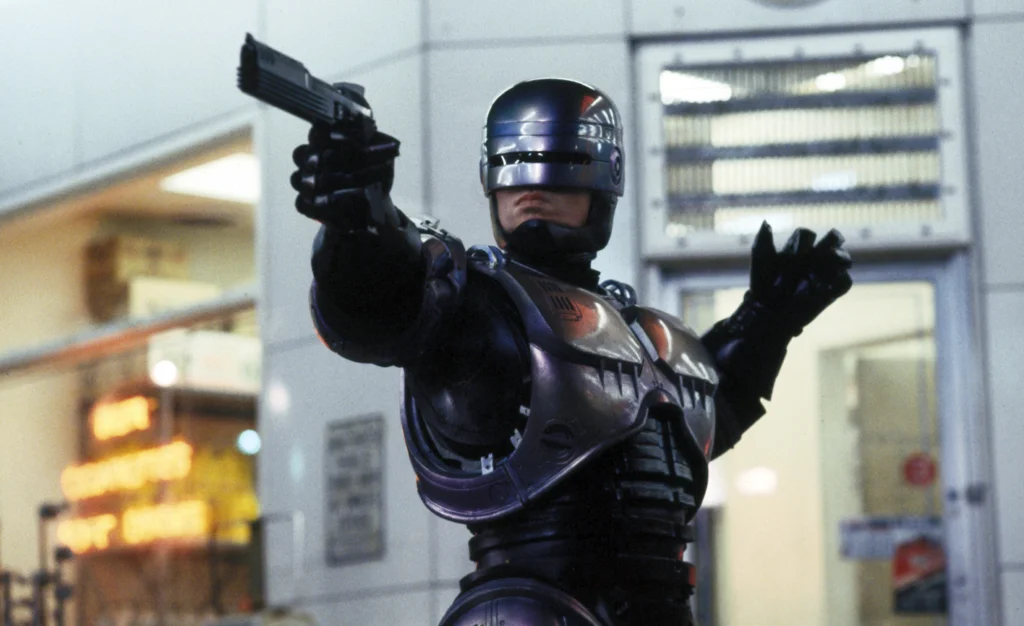
Paul Verhoeven’s groundbreaking film was far more than a simple shoot-’em-up sci-fi adventure. The movie used its hyper-violent narrative to deliver biting commentary on corporate power, urban decay, and the dehumanizing effects of technology. Each satirical moment was wrapped in a package of explosive action that made its deeper messages palatable.
The design of Robocop himself was a masterpiece of practical effects and costume design that influenced science fiction for generations. Actor Peter Weller brought an incredible nuanced performance to a character who was part machine, part human. The film’s dark humor and social critique elevated it from a simple action movie to a profound cultural statement.
5. Lethal Weapon: Buddy Cop Dynamics Redefined

Mel Gibson and Danny Glover created a chemistry so genuine that it transformed the entire buddy cop genre forever. Riggs and Murtaugh weren’t just partners; they were a mismatched duo who represented different generations and approaches to law enforcement. Their relationship felt authentic, with genuine emotional depth rarely seen in action films.
The movie balanced intense action sequences with moments of genuine humor and heart. Gibson’s portrayal of Martin Riggs as a slightly unhinged but ultimately noble cop became an archetype for future characters. Their partnership showed that true friendship could transcend professional boundaries and personal differences.
6. Escape from New York: Dystopian Cool Personified
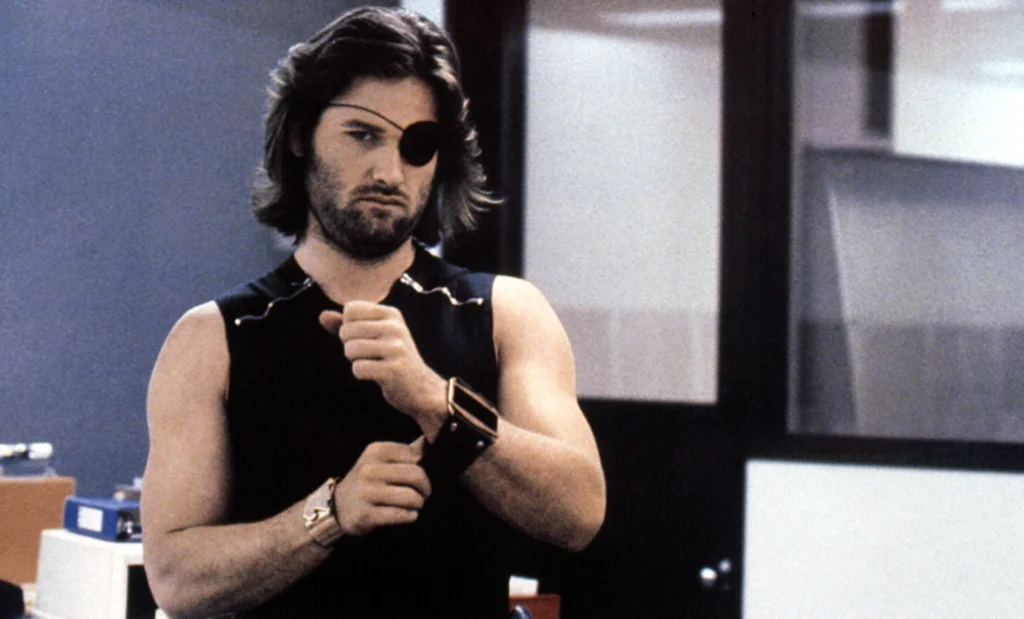
Kurt Russell’s Snake Plissken became the ultimate anti-hero, a character so cool he made rebellion look effortless. The film’s vision of a post-apocalyptic Manhattan transformed into a maximum-security prison was both terrifying and bizarrely compelling. Director John Carpenter created a world that felt simultaneously impossible and disturbingly plausible.
The movie’s gritty aesthetic influenced countless post-apocalyptic narratives that followed. Russell’s performance captured a perfect blend of cynicism, toughness, and underlying moral complexity. His character became a pop culture icon that represented resistance against oppressive systems.
7. First Blood: The Birth of the Modern Action Veteran Narrative
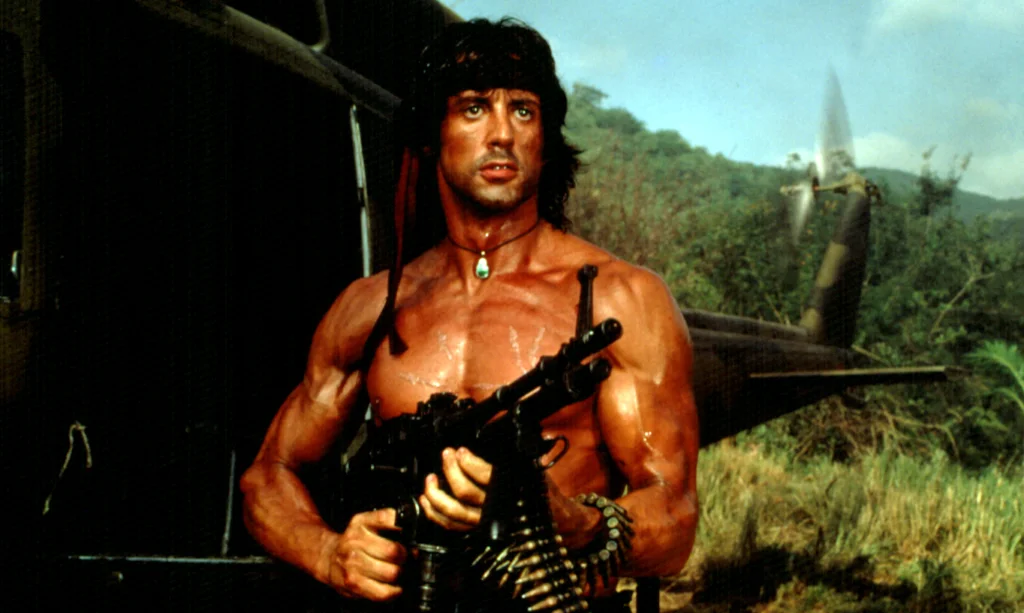
Sylvester Stallone’s portrayal of John Rambo went far beyond simple action hero tropes, presenting a complex portrait of a Vietnam veteran struggling to reintegrate into society. The film addressed serious issues of veteran treatment with a raw, unflinching perspective that was revolutionary for its time. Rambo became a symbol of misunderstood heroism and societal neglect.
The movie’s stunning wilderness sequences showcased Stallone’s character as a survival expert, transforming action movie landscapes. His performance humanized veterans, showing them as multifaceted individuals rather than simplistic stereotypes. First Blood started a franchise but remained the most nuanced exploration of post-war trauma.
8. Raiders of the Lost Ark: Adventure Redefined
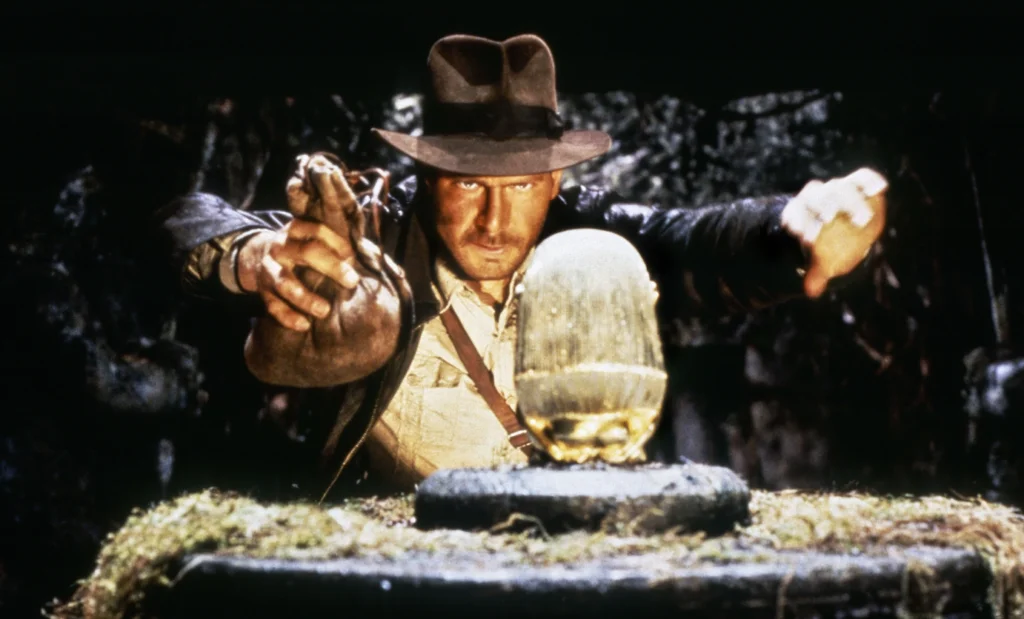
Harrison Ford’s Indiana Jones wasn’t just an archaeologist; he was the ultimate adventurer who made academics look like the most exciting profession possible. The film blended historical mystique, supernatural elements, and pure adrenaline in a way no movie had done before. Every sequence felt like a breathless roller coaster of excitement.
John Williams’ iconic score became inseparable from the movie’s sense of adventure and discovery. The film created a template for adventure movies that would be imitated but never truly duplicated. Ford’s portrayal made scholarly exploration feel as thrilling as any military mission.
9. The Terminator: Sci-Fi Action Meets Philosophical Depth

James Cameron’s breakthrough film presented a chilling vision of technology’s potential threat that felt both fantastical and uncomfortably possible. Arnold Schwarzenegger’s portrayal of the relentless cyborg became an instant cultural touchstone. The movie’s time-travel narrative added layers of philosophical complexity to its action framework.
Linda Hamilton’s transformation from ordinary woman to fierce survivor became a groundbreaking character arc. The film’s low-budget special effects somehow made the story feel more authentic and terrifying. Cameron created a world where technological apocalypse felt like a genuine potential future.
10. Mad Max 2: The Road Warrior: Post-Apocalyptic Imagination Unleashed
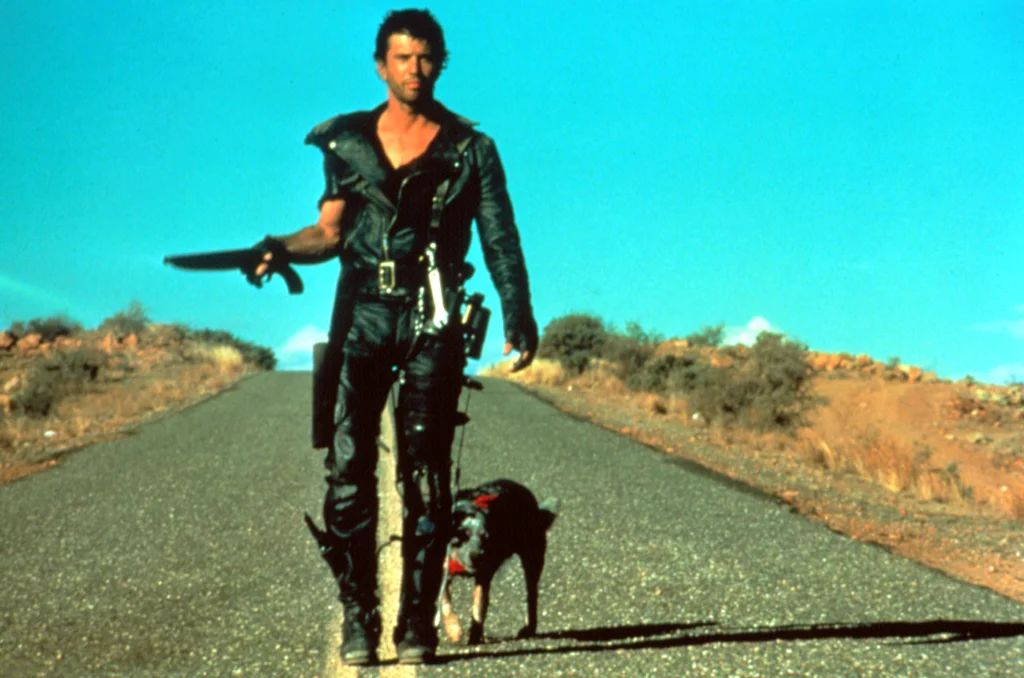
Mel Gibson’s Max became the definitive post-apocalyptic hero, representing survival and moral ambiguity in a destroyed world. The film’s unprecedented vehicle design and action sequences created an entire aesthetic for future dystopian narratives. Every chase sequence felt like a ballet of destruction.
The movie’s world-building was so complete that it felt like a genuine alternate reality. Gibson’s minimalist performance communicated volumes through physical acting and nuanced expressions. The Road Warrior transformed how audiences imagined potential future societal collapses.
11. Aliens: Feminist Action Heroism Emerges
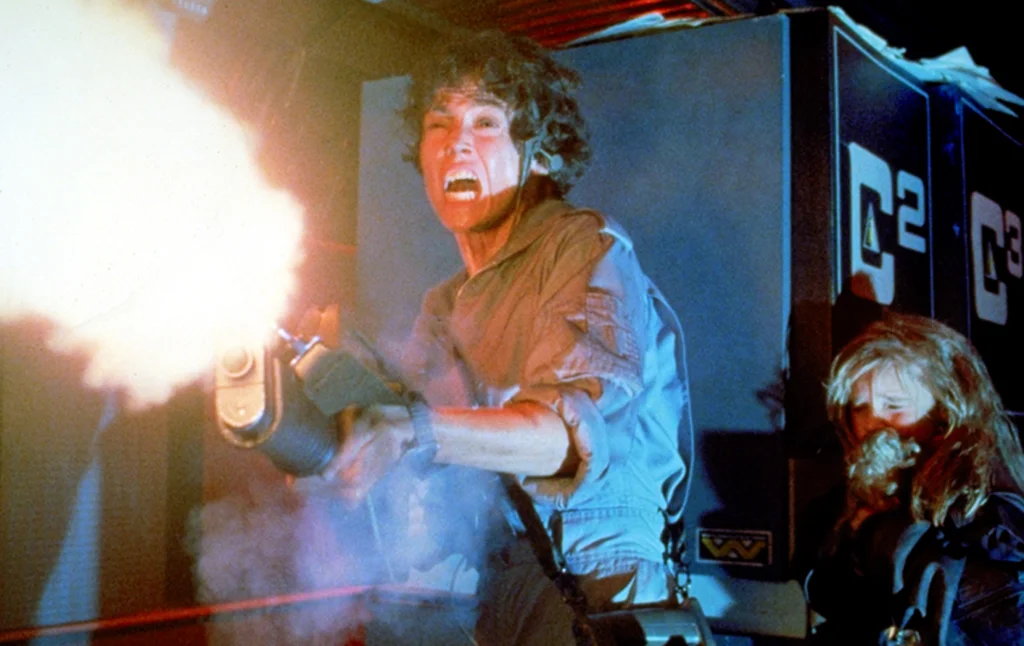
Sigourney Weaver’s Ellen Ripley represented a revolutionary approach to female action protagonists, displaying strength, intelligence, and emotional depth. The film expanded on the original’s horror foundations to create a hybrid action-sci-fi masterpiece. Ripley wasn’t just surviving; she was actively fighting and protecting others.
James Cameron’s direction created tension through character development rather than mere spectacle. The movie’s military team felt like genuine, nuanced individuals rather than simple cannon fodder. Aliens proved that complex character development could coexist with intense action sequences.
12. Big Trouble in Little China: Magical Martial Arts Mayhem
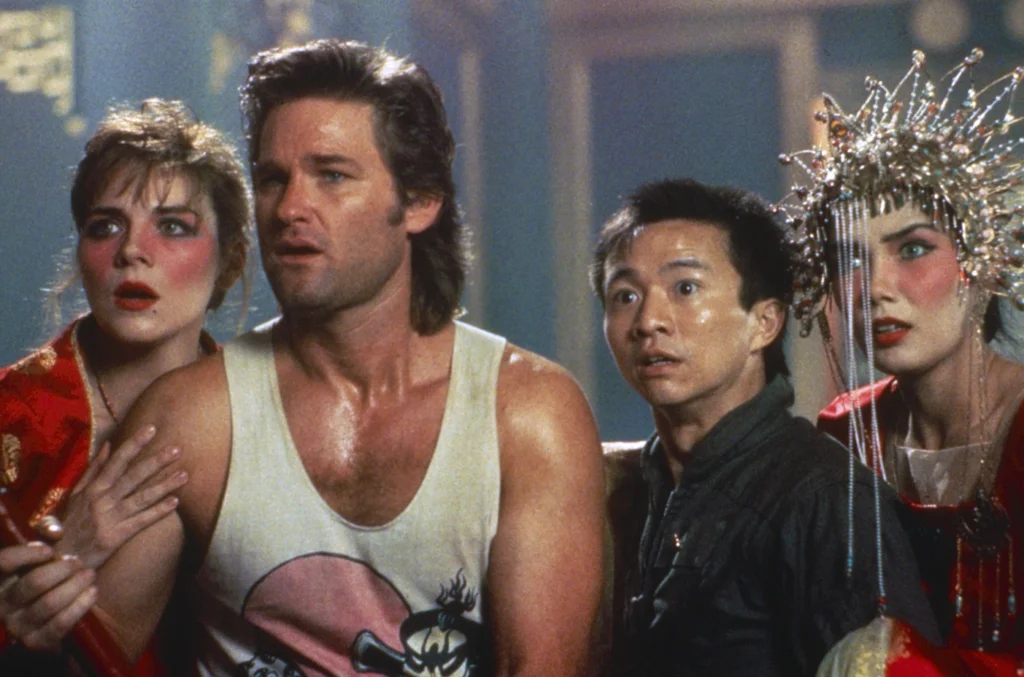
Kurt Russell’s Jack Burton was a brilliantly self-unaware hero who thought he was the protagonist but was actually the comic relief. The film blended martial arts, supernatural elements, and pure comedic energy in a way no movie had attempted before. Director John Carpenter created a world that defied traditional genre expectations.
The movie’s representation of Chinese-American culture, while imperfect, was more nuanced than many contemporary films. Russell’s performance captured a perfect balance of bravado and complete obliviousness. Big Trouble in Little China became a cult classic that celebrated cultural complexity.
13. Beverly Hills Cop: Comedy Meets Action Policing
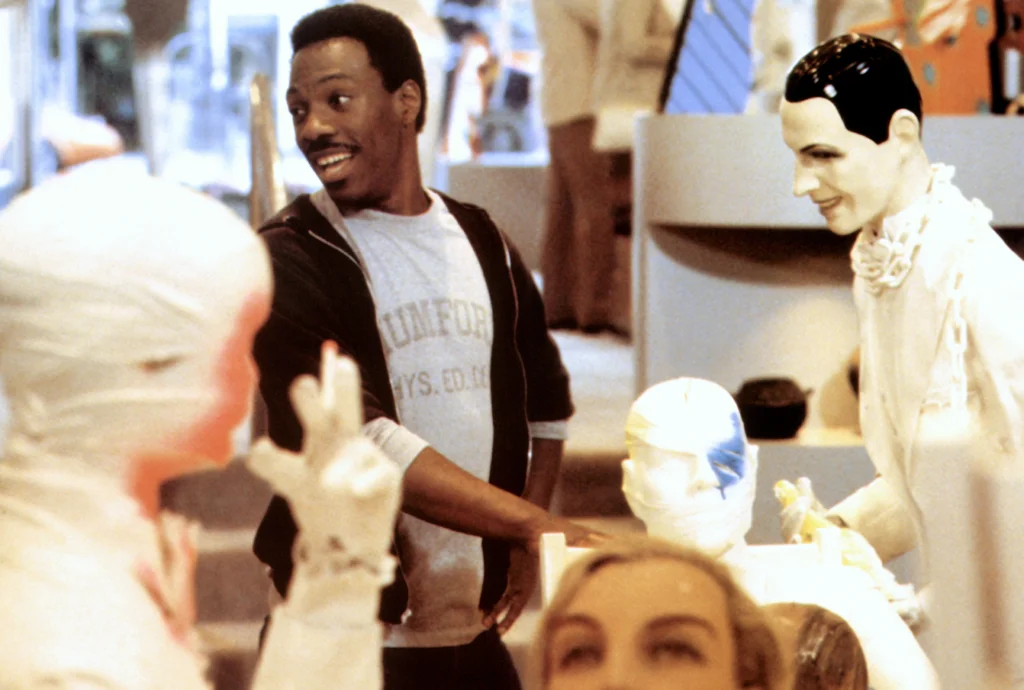
Eddie Murphy transformed the action comedy genre with his portrayal of Axel Foley, a Detroit cop who brought street-smart humor to Beverly Hills. The film broke racial stereotypes by presenting a Black protagonist who was intelligent, charming, and completely in control. Murphy’s performance felt revolutionary for its time.
The movie’s soundtrack became an integral part of its cultural impact, with hits that defined the era. Foley’s investigative methods combined genuine detective work with irresistible comedic moments. Beverly Hills Cop showed that action heroes could be funny and complex.
14. Bloodsport: Martial Arts Goes Mainstream
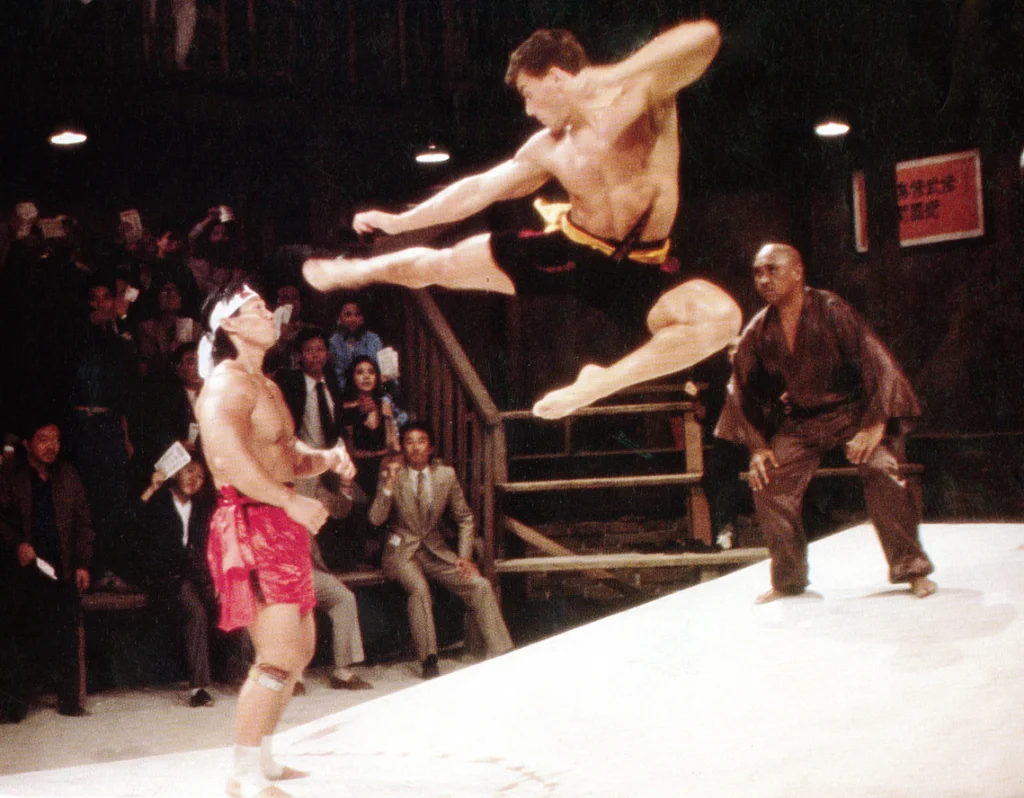
Jean-Claude Van Damme burst onto the action scene with a film that transformed martial arts from a niche interest to a mainstream phenomenon. Based loosely on a supposedly true story, the movie introduced American audiences to the raw intensity of international fighting tournaments. Van Damme’s incredible flexibility and high-kick techniques became an instant sensation that inspired countless young martial arts enthusiasts.
The Kumite tournament portrayed in the film captured the imagination of a generation fascinated by international combat sports. Every fight sequence became a masterclass in choreography and physical prowess, showcasing martial arts as both an art form and an intense competitive discipline. Van Damme’s character, Frank Dux, represented the ultimate underdog story – a fighter proving himself against seemingly insurmountable odds.
Our journey through these cinematic treasures reveals more than just action sequences – we’ve explored a cultural moment that shaped generations. These films weren’t merely entertainment; they were collective dreams projected onto the silver screen, capturing hopes, fears, and the incredible imagination of an entire era. They remind us that sometimes, the most profound cultural statements come wrapped in the most explosive packages.


